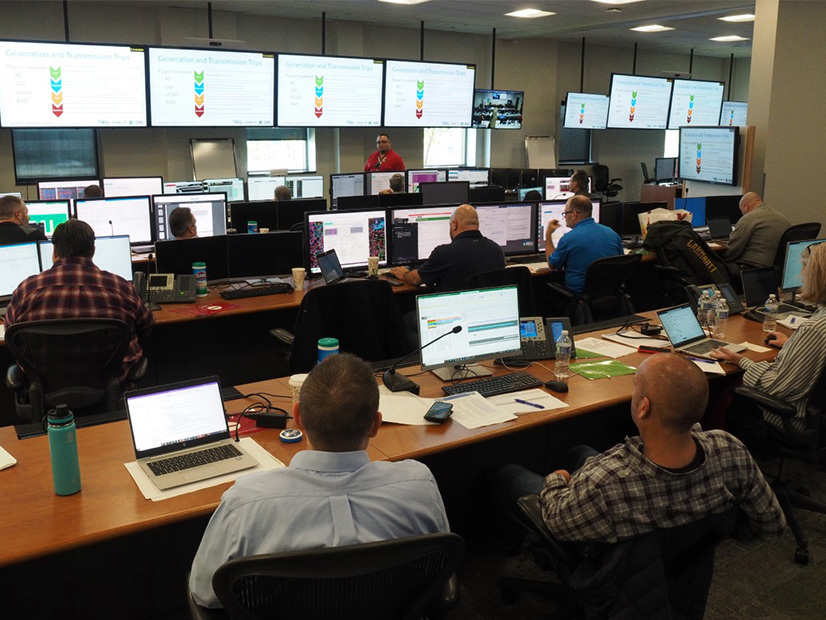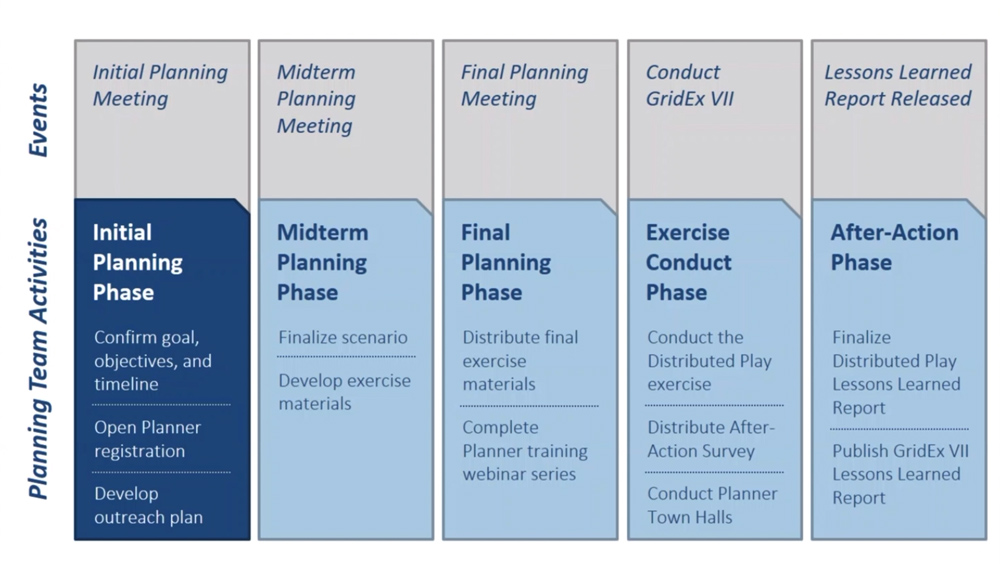
NERC has begun planning for next year’s GridEx VII security exercise and is expecting a boost in attendance after participation in the distributed play portion declined for the first time last year.
Speaking at Thursday’s meeting of NERC’s Real Time Operating Subcommittee (RTOS), Laura Brown, director of engagement and security policy coordination at the Electricity Information Sharing and Analysis Center (E-ISAC), told attendees that planners are “looking for … additional support that industry can provide … the [reliability coordinators] in particular.”
The E-ISAC has developed, managed and delivered each iteration of GridEx since the first one held in 2011.
GridEx VI, held from Nov. 16-18, 2021, consisted of a distributed play the first two days involving more than 3,000 people across 293 organizations, and an executive tabletop featuring almost 200 participants from 88 organizations in the U.S. and Canada. (See NERC: GridEx Lessons Already In Use.)
The number of organizations taking part in the distributed play last year was the lowest recorded since GridEx II in 2013, while the 3,000 individuals participating represented fewer than half of GridEx V’s approximately 7,000. Brown said Thursday that the “dip in participation … was in part due to the pandemic as well as some changes that we made to registration requirements,” referring to the fact that unlike in previous years, participants in GridEx VI were only required to register with the E-ISAC to use the exercise tools or access planning materials.
NERC has previously indicated that the registration changes are likely to remain in place for future installments of the biennial exercise and that “future participation numbers are likely to be more comparable to those recorded for GridEx VI.” However, Brown emphasized that “we do expect to see some of those numbers go back up.” While she did not explain her statement at the time, she was likely referring to the relaxation of travel restrictions among many participating organizations.
E-ISAC Reviews Planning Phases
Accompanying Brown to the RTOS meeting was Jesse Sythe, who recently joined the E-ISAC as GridEx program manager. Sythe provided an overview of the GridEx VII planning process, which involves three distinct groups: sponsorship and management, exercise design and development, and exercise planning and execution.
The first group, sponsorship and management, comprises the executive sponsors — NERC CEO Jim Robb and E-ISAC CEO Manny Cancel — and the planning team, which includes Brown and Sythe. Responsibilities of the planning team, according to Sythe, include “gathering input from … other industry groups, developing exercise materials, training, webinars, exercise tools and then drafting the lessons learned report.”
Next is the exercise design and development group, which Sythe called “the bridge between the sponsorship and management lane and … the exercise participants.” The group is divided into a design team, a reliability coordinator team, a subject matter expert team and a training webinar team, and is meant to provide the planners with perspectives on the challenges utilities face every day.
“We don’t always have day-to-day insight into what utilities see in steady state or emergency situations, so the input that we receive from each team helps us to develop the exercise scenario, the materials and all the training webinars that are most beneficial to planners and players,” Sythe said.
The last group involved in the planning process is exercise planning and execution, which includes the lead planners and planners from each organization who adapt the exercise scenario created by the planning team to their particular circumstances. Players are also considered to be part of this lane because they are the ultimate users of the scenario.

Currently planners are in the initial phase of the project timeline, which Brown and Sythe shared at the meeting. This phase involves setting the goal, objectives and timeline of the exercise and developing an outreach plan, expected to last through the next few months. In the midterm planning phase the team will finalize the scenario and develop exercise materials, followed by the final planning phase when the final exercise materials are distributed and the planner training webinar series is completed. The two phases of the exercise will be conducted in November 2023, with the after-action phase to follow.


